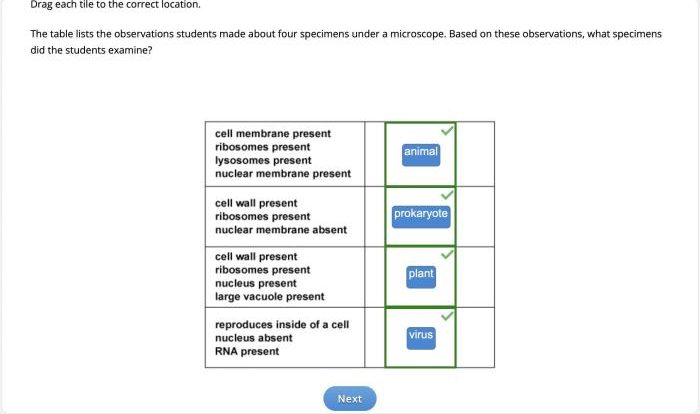Unveiling the intricate world of microorganisms, the Viruses and Bacteria Worksheet Answer Key provides a comprehensive exploration of these enigmatic entities. From their diverse types and transmission mechanisms to their impact on human health and public well-being, this guide unravels the mysteries surrounding viruses and bacteria, empowering readers with a profound understanding of these microscopic marvels.
Delving into the depths of virology and bacteriology, this guide categorizes viruses and bacteria, highlighting their unique characteristics and contrasting their fundamental differences. It illuminates the diverse modes of transmission employed by these microorganisms, exploring how they spread through contact, airborne droplets, and contaminated surfaces, using specific examples to illustrate these mechanisms.
Types of Viruses and Bacteria
Viruses and bacteria are microorganisms that can cause disease in humans and other living organisms. They are classified into different groups based on their characteristics and the diseases they cause.
Viruses
- Characteristics:Viruses are not living organisms but rather infectious particles composed of genetic material (DNA or RNA) enclosed within a protein coat.
- Reproduction:Viruses cannot reproduce on their own; they require a host cell to replicate and spread.
- Transmission:Viruses can be transmitted through contact with infected individuals, contaminated surfaces, or airborne droplets.
- Examples:Influenza virus, HIV, Ebola virus
Bacteria, Viruses and bacteria worksheet answer key
- Characteristics:Bacteria are single-celled prokaryotic microorganisms with a cell wall and a cytoplasm containing genetic material (DNA).
- Reproduction:Bacteria reproduce by binary fission, where one cell divides into two identical daughter cells.
- Transmission:Bacteria can be transmitted through contact with infected individuals, contaminated food or water, or inhalation of airborne droplets.
- Examples: Staphylococcus aureus, Escherichia coli, Streptococcus pneumoniae
Impact on Human Health
Viruses and bacteria are responsible for a wide range of diseases in humans, from common colds to life-threatening infections. Viral infections include influenza, measles, and HIV/AIDS. Bacterial infections include pneumonia, tuberculosis, and food poisoning.
Essential Questionnaire: Viruses And Bacteria Worksheet Answer Key
What is the primary difference between viruses and bacteria?
Viruses are acellular entities that require a host cell to replicate, while bacteria are single-celled organisms capable of independent growth and reproduction.
How are viruses transmitted?
Viruses can be transmitted through contact with infected individuals, inhalation of airborne droplets, or contact with contaminated surfaces.
What are effective measures to prevent the spread of bacteria?
Maintaining good hygiene practices, such as handwashing and surface disinfection, is crucial for preventing the spread of bacteria.
